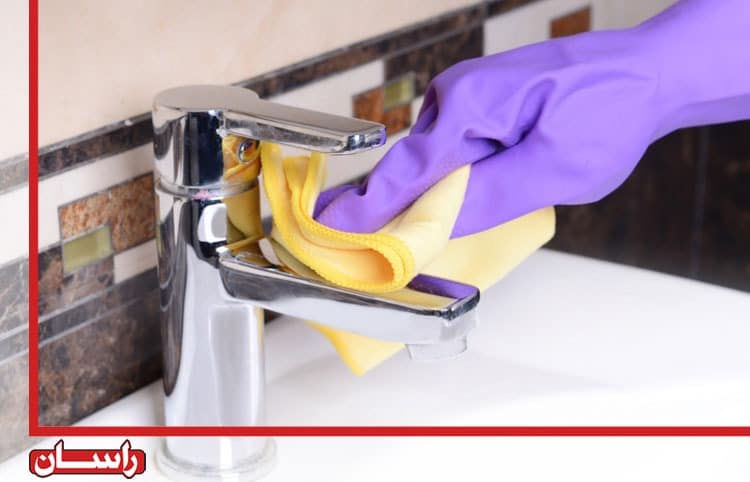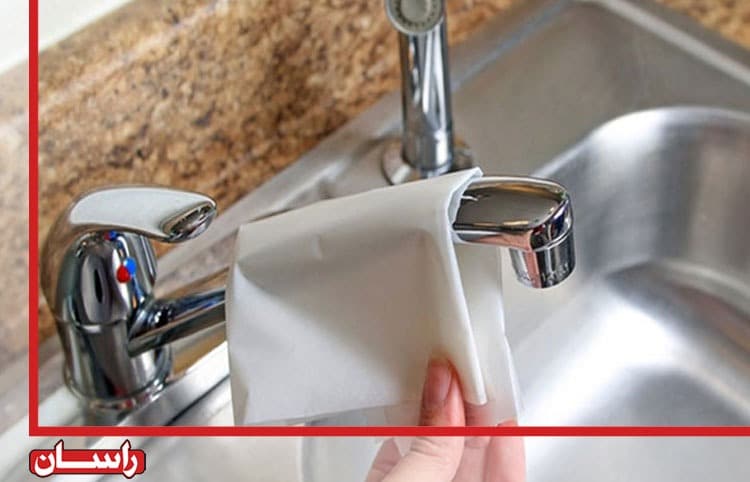Faucets are an important part of a home’s sanitary tools. Kitchens, bathrooms, toilets, and other areas all rely on faucets to direct clean water throughout the space.
However, these stylish and elegant fixtures require care and maintenance after purchase. Cleaning bathroom and kitchen faucets is not difficult, and if done properly, they will need less frequent cleaning over time. With a few simple home tricks, you can easily keep your faucets looking as good as new.
Faucets are also a key element of home décor, and their shine and brilliance reflect the cleanliness and tidiness of the house.

Cleaning, Descaling, and Maintaining Faucets
Faucet Maintenance and Cleaning
When cleaning and polishing faucets, the following points should be considered:
Small white spots on faucets reduce their shine and can create an unpleasant feeling when using them. These spots are caused by mineral deposits and salts present in the water on the surface of the faucet or the underlying pipes. First and foremost, never use acidic or chemical cleaners such as hydrochloric acid, bleach, or steel wool, as they can damage the nickel plating and finish of the faucets and void the warranty.
- Best Cleaning Method: Use a solution of water and soap to clean the faucets. This preserves their natural color and keeps them shiny. It is recommended to use soft sponges or cloths to avoid scratching the surface. For best results, clean the faucets before deposits fully cover them. A weekly wash using a solution of water, soap, and a soft sponge is ideal, followed by drying with a soft towel or cloth to prevent leftover water droplets from causing new deposits. This will extend the lifespan of your faucets and reduce the need for replacements.
Daily Care: Even plain water can help keep faucets clean if washed regularly. However, using a simple antibacterial cleaner can provide extra comfort and hygiene.

Cleaning, Descaling, and Removing Deposits from Faucets
Removing Deposits from Faucet Surfaces
- Using White Vinegar: White vinegar is a natural substance that can be used to clean faucets. Many experienced users consider a solution of vinegar and water to be the best cleaner and polisher for faucets. To remove deposits, soak a paper towel in vinegar, wrap it around the affected areas, and leave it for 10 minutes. Then, simply wipe off the residue with a dry paper towel.
Note: Due to its acidic nature, vinegar can alter the color of colored or brass faucets. Therefore, this method is best suited for stainless steel or chrome faucets. Vinegar can act as a strong polish to remove deposits effectively.
Descaling Showerheads: To remove deposits from a showerhead, detach it and soak it in a solution of 50% white vinegar for 30 minutes. This method clears the holes of the showerhead from mineral deposits and eliminates any blockages.

Cleaning, Descaling, and Removing Deposits from Faucets
Avoid Using Hydrochloric Acid or Strong Cleaners on Faucets
If you use hydrochloric acid (muriatic acid) to clean your bathroom, always cover the faucets with plastic before applying it. Do not close the container, and rinse the area quickly. The fumes from hydrochloric acid can damage the faucet’s finish and reduce its lifespan.
Even when following proper hygiene and maintenance practices, faucets can sometimes deteriorate and lose functionality before the expected lifespan, forcing the consumer to replace them sooner. This often happens when non-reputable brands or inferior products are used. Such products tend to contain higher percentages of impurities in the body and handle, and their plating is not done properly or reliably.
Recommendation: When purchasing faucets, always pay attention to the manufacturer’s reputation, warranty, and after-sales services to ensure durability and safety.

